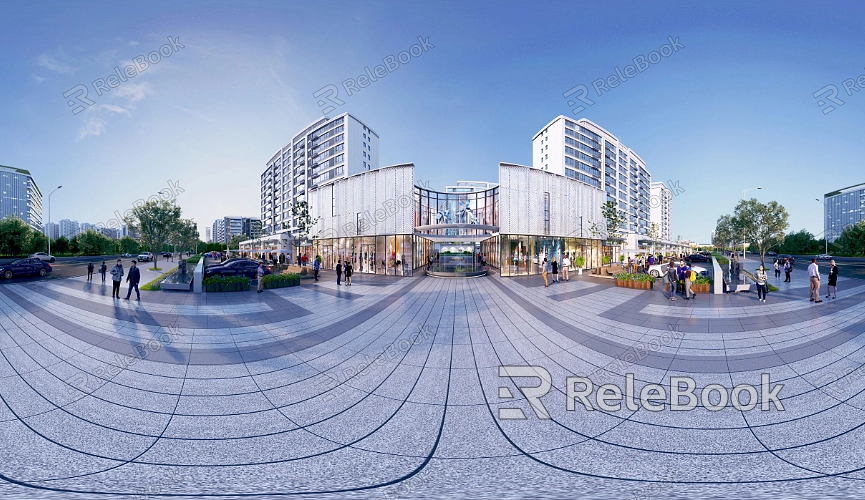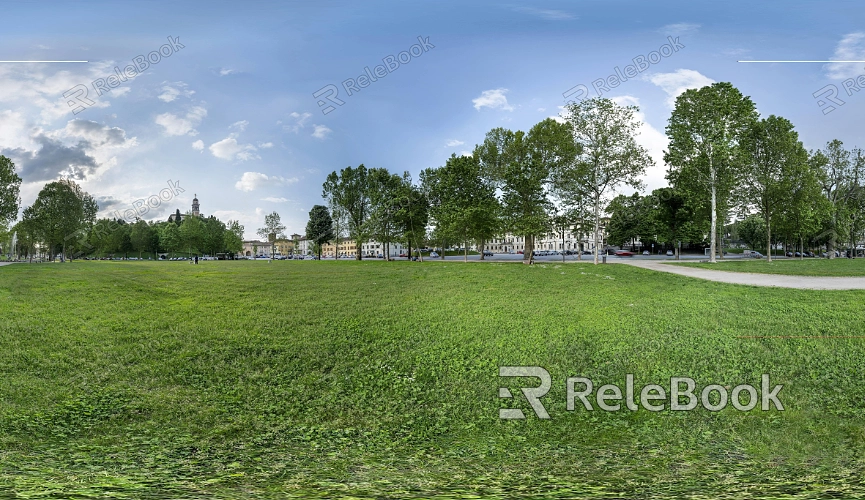What is HDR Calibration
Whether it's architectural visualization, game environment design, or movie special effects, HDR (High Dynamic Range) can help designers create stunning lighting effects. However, to ensure that these effects are accurately displayed across various devices, HDR calibration is essential. This article delves into what HDR calibration is, its applications, key steps, and its importance in 3D design.

1.Definition and Importance of HDR Calibration
Definition: HDR calibration involves adjusting and optimizing HDR images across different devices or displays to ensure that lighting and color accurately reflect the designer's intent. Given that different displays have varying color and brightness performances, HDR calibration helps eliminate these discrepancies.
Importance: In 3D design, if an HDR image isn't calibrated, it may display inconsistently across different devices, leading to a loss of visual impact when presenting the final work. Thus, HDR calibration is crucial for maintaining the quality and consistency of the design.
2.Common Applications of HDR Calibration
Architectural Visualization: In architectural rendering, HDR calibration ensures that buildings maintain a consistent appearance across different devices. For example, when showcasing high-end real estate projects, precise HDR calibration can make sunlight, shadows, and material textures look impressive on any display.
Game Design: In game development, HDR calibration helps unify the visual experience across different players' devices, ensuring that the lighting and shadow effects in game scenes are as precise as intended, thus providing a more immersive gaming experience.
Movie Special Effects: For movie special effects production, HDR calibration ensures that the visual effects of virtual scenes remain consistent on various display devices, such as cinema screens and home televisions. Through calibration, filmmakers can ensure that every viewer experiences the intended lighting effects.
3.How to Perform HDR Calibration
Color Calibration: The first step in HDR calibration is to ensure accurate color calibration of the display. This usually requires the use of color calibration tools like colorimeters or photometers to measure and adjust the display's color performance to meet standard color spaces such as sRGB or Rec.709.
Brightness and Contrast Adjustment: Adjusting brightness and contrast is also crucial during calibration. Designers need to ensure that the bright and dark areas of the image are accurately rendered. This can be achieved by adjusting the display’s brightness, contrast, and HDR brightness settings.
Color Temperature Settings: Color temperature determines the overall tone of the image. During HDR calibration, designers need to adjust the color temperature according to the characteristics of the display device to ensure that the image's colors don't appear too warm or too cool.
4.HDR Calibration in 3D Software
Blender: In Blender, designers can perform HDR calibration through the color management panel. They can select the appropriate color profile and use exposure and contrast settings to optimize the display of HDR images.
3ds Max: The V-Ray renderer in 3ds Max offers powerful color calibration tools, allowing designers to calibrate HDR images, including color curve adjustments, exposure control, and contrast optimization.
Maya: In Maya, the Arnold renderer also provides extensive HDR calibration options. Designers can achieve precise HDR calibration by adjusting lighting, material reflection, and color management settings.

5.Challenges of HDR Calibration
Device Variability: Different devices have different display characteristics, which presents a challenge for HDR calibration. Designers need to understand how to calibrate across multiple devices to ensure that their work looks consistent under various display conditions.
Technical Requirements: HDR calibration involves complex technical knowledge, such as color theory, light propagation, and the hardware characteristics of display devices. Designers must possess not only extensive experience but also mastery of relevant tools and software.
6.Tips for Enhancing HDR Calibration
Regularly Calibrate Display Devices: The performance of display devices can change over time, so regular calibration is key to maintaining consistency in HDR effects. Designers should regularly use calibration tools to check and adjust their monitors.
Use Standardized Color Profiles: When performing HDR calibration, using standardized color profiles such as sRGB or Adobe RGB can help maintain color consistency. These profiles are widely tested and provide reliable color performance across various devices.
Simulate Multi-Device Display Effects: During the 3D design process, simulating the display effects on different devices can help identify and resolve potential HDR calibration issues. By testing on different devices, designers can ensure that their work maintains optimal performance in various environments.
7.Future Trends in HDR Calibration
Automated Calibration Tools: With the advancement of AI technology, we may see more automated HDR calibration tools in the future. These tools could automatically adjust image parameters according to design needs, reducing manual calibration workload while increasing precision.
Cross-Device Consistency Optimization: As the diversity of devices continues to grow, future HDR calibration technology will likely focus more on optimizing consistency across devices, ensuring that image effects remain uniform regardless of the display device.
With precise calibration, designers can ensure that their work delivers outstanding visual effects on any device. If you're looking for high-quality HDR resources, 3D textures, SketchUp models, or 3ds Max models to enhance your design, Relebook offers a wealth of options to help you achieve exceptional visual results in your projects.

